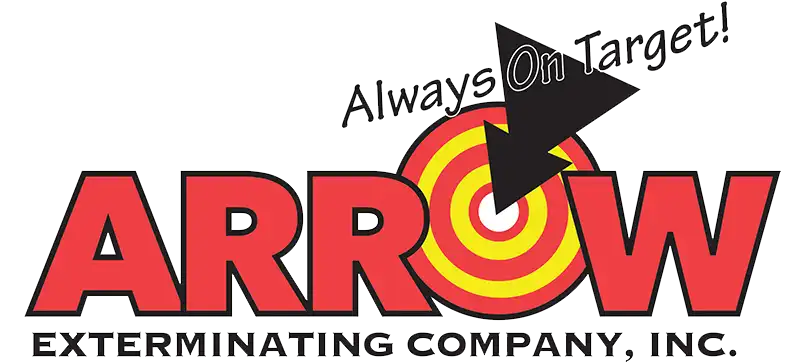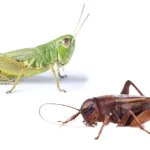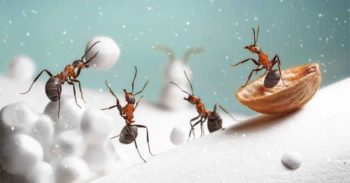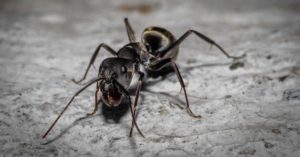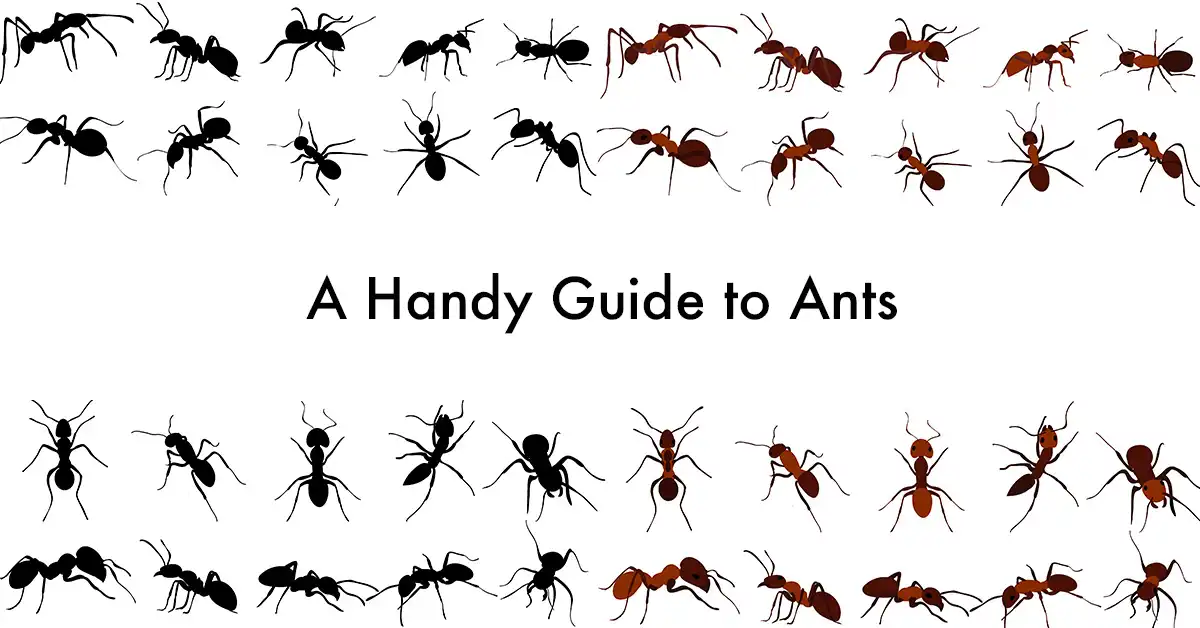
Ants have a place in nature, but no one wants to see them in their home or on their property. While you want to keep all of them out, some are more dangerous than others. If you have a hard time keeping them straight, here’s a guide to common types of ants.
What type of Ant do I have in my house?
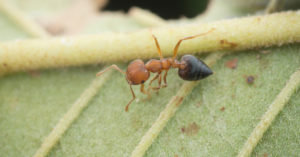
Acrobat Ants
Because of their ability to lift their heart-shaped abdomens over their bodies as if doing gymnastics tricks, they’re named acrobat ants. As omnivores they eat just about anything. Since they nest inside walls and in water-damaged wood, they can be a serious problem for homeowners.
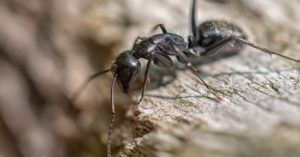
Carpenter Ants
One of the most dreaded types of ants, carpenter ants get their name from how they build – and they cause structural damage to homes and buildings to do it. However, they don’t actually eat the wood they damage. Instead they chew tunnels and nests. Finding piles of sawdust can be a sign of a carpenter ant infestation.
While carpenter ants are more drawn to wet and rotting wood, even creosote-treated wood doesn’t deter carpenter ants because they don’t eat the wood. Carpenter ants will even chew through plastic as well as killing and eating termites.
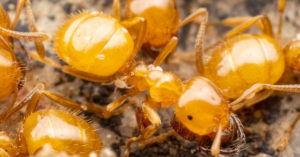
Citronella Ants
When crushed, these ants give off a lemony scent like citronella, but because they’re nocturnal, they aren’t commonly spotted. Citronella ants are also less likely than some other ants to enter homes but can become quite the nuisance if they do. Because they prefer damp living conditions, they’re more likely to be found in bathrooms, kitchens, along foundations or under concrete where water can collect.

Odorous House Ants
Named for the fact that they give off a strong smell when crushed, which some describe as a rotting coconut scent, Odorous house ants are small, dark brown or black ants. A common type of ant, they’re often found on counters or along floorboards looking for food.
Odorous house ants are especially fond of sweet foods but are omnivores. This means they’ll also eat dairy, meat, grease, pet food and dead insects. They’re more likely to come inside during periods of heavy rain.

Pavement Ants
Primarily outdoor ants, as their name indicates, this type of ant does not cause structural damage to buildings because they don’t eat wood. While they prefer to live in pavement or sidewalk cracks, under gravel, sand, etc. they do sometimes nest in a house during the winter. They’ll also enter your home in search of food.
Nicknamed “sugar ants” in the United States, but a completely separate species from Australian sugar ants, they like sweet things like most ants do. They also eat fat, grease, meat, protein, plant roots and seeds. Pavement ants will also fight to the death with ants from another colony to control the territory.

Pharaoh Ants
After carpenter ants, pharaoh ants might be the biggest problem for homeowners. They build nests inside walls, under floors, behind baseboards and even in furniture. To make it worse, they also reproduce rapidly. They can transmit a wide range of diseases such as salmonella and Streptococcus. Pharaoh ants even use phone and electrical wires to travel.
Ant Invasion? Call Arrow
If you’re still not sure what kind of ants are on your property, call Arrow Exterminating to identify the type of ant and provide the right solution. To get started, contact Arrow Exterminating today.
